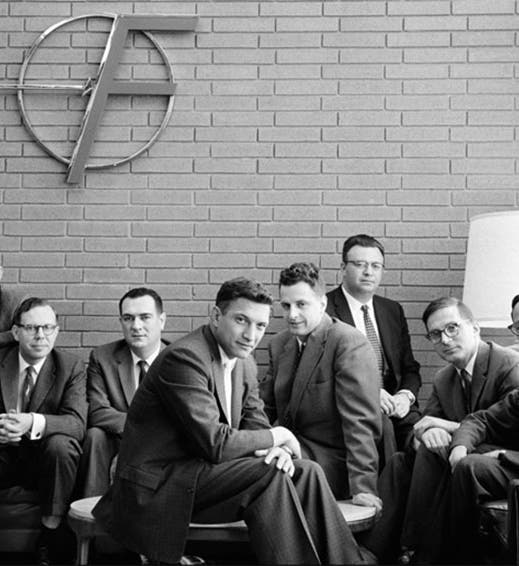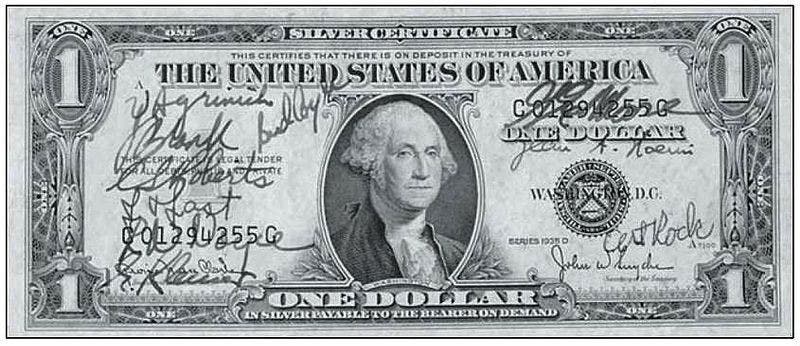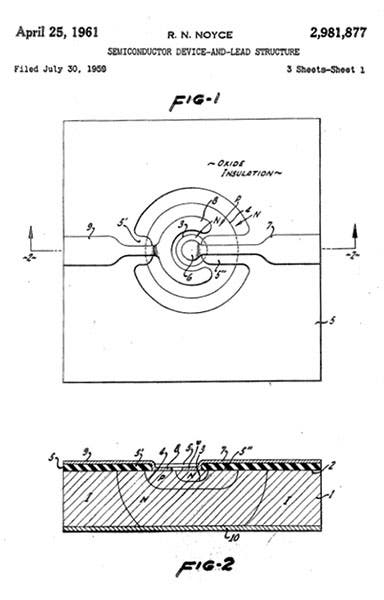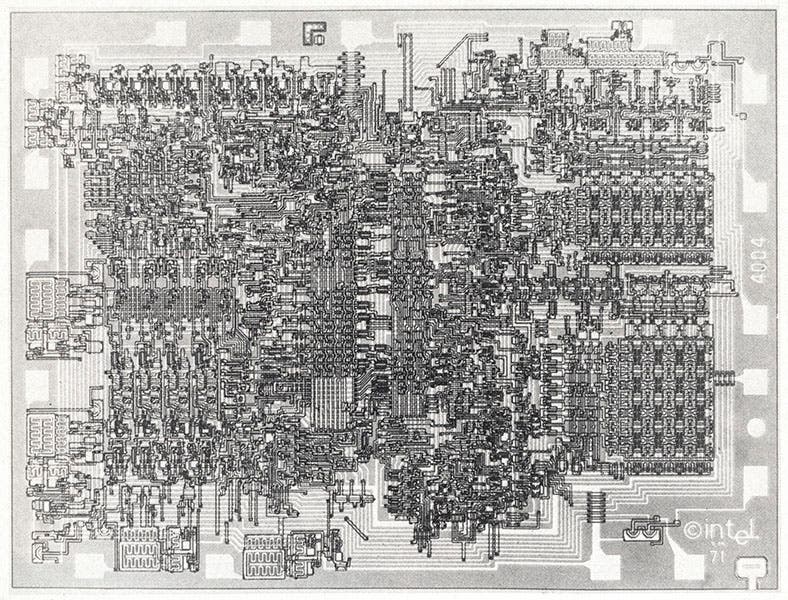Scientist of the Day - Robert Noyce
Robert Noyce, American physicist and electronics entrepreneur, was born on December 12, 1927. A tinkerer by inclination, he gained notoriety in his hometown of Grinnell, Iowa when, at the age of twelve, he and his older brother built a glider with an 18-foot wingspan, which they launched off the roof of a barn. Noyce survived the plunge and wrote about this experience in his application essay to Grinnell College. As an undergraduate, he majored in physics and mathematics while continuing to indulge his inner daredevil by joining the school’s diving team. One of Noyce’s professors at Grinnell introduced him to a new invention called the transistor that had been developed by scientists at Bell Labs, the research branch of AT&T. Transistors could amplify electrical signals like the vacuum tubes used in pre-World War II radios and televisions, but they were smaller and less fragile. Noyce became fascinated with transistors and the semiconductors, like germanium and silicon, used to construct them. This enthusiasm led him to pursue a doctorate in physics at M.I.T., where his dissertation research focused on solid-state electronics. After graduating in 1953, Noyce joined the staff of Philco, a Philadelphia-based electronics firm that was expanding its semiconductor research group. His work eventually attracted the attention of William Shockley, who had previously supervised the development of the transistor at Bell Labs. Shockley, a California native, had recently left AT&T and secured funding from instrument maker Arnold Beckman to establish a new company, Shockley Semiconductor Laboratory, in Palo Alto. Noyce leapt at the chance to collaborate with Shockley and relocated his family to the West Coast in 1956. As much as Noyce may have admired Shockley’s scientific achievements, he and his colleagues soon became frustrated with his leadership style. Shockley was an abrasive micromanager, who regularly lashed out at his staff. He also ignored their recommendations to manufacture silicon transistors, urging them to focus instead on a more complicated device known as a PNPN diode. By the summer of 1957, the situation had grown so dire that a group of eight senior staff members, including Noyce, decided it was time to leave Shockley Semiconductor Laboratory behind. After meeting with a pair of representatives from the New York investment firm Hayden Stone & Company, this group of researchers, later known as the “traitorous eight,” decided to launch their own firm (first image). They commemorated the decision by signing ten one-dollar bills - one for each scientist and the two bankers - that served as symbolic contracts with one another (second image).
Within a few months, Noyce and his colleagues secured funding from the Fairchild Camera and Instrument company to establish Fairchild Semiconductor, which is often considered the first Silicon Valley spin-off. Noyce settled into his new role as the company’s head of research, and as Fairchild’s first transistors rolled of the assembly line, he began brainstorming a bold new idea. Replacing the vacuum tube with the transistor drastically reduced the size of electrical equipment and enabled engineers to fit more circuit components in a given amount of space. As the number of components increased, so too did the number of connections between them. Unfortunately, even a single faulty solder joint could drastically affect the performance of the final system. Industry experts agreed that one might avoid this problem by eliminating discrete circuit components and instead manufacture all of the relevant transistors, capacitors, diodes, or resistors on a single block of semiconducting material. In 1958, an engineer at Texas Instruments named Jack Kilby successfully proved the viability of this new “integrated circuit” approach by building an oscillator whose components were embedded on an ingot of germanium and connected with gold wires that arced above its surface. Noyce was unaware of Kilby’s research when he launched his own investigations into integrated circuitry. He was, however, familiar with a new manufacturing process developed by his Fairchild colleague, Jean Hoerni. Hoerni had created a new, planar (flat) transistor that could be protected from contaminants using a layer of silicon dioxide. Noyce realized that if one produced multiple circuit components on a silicon wafer, it would be possible to connect them by leaving small holes in this protective coating and depositing thin lines of aluminum between them. At the end of July 1959, Noyce submitted a patent application for this new planar integrated circuit (third image), which would ultimately serve as the precursor for all modern microchips. By the spring of 1961, Fairchild had transformed his idea into a new line of digital logic circuits.
Boosted by its integrated circuit sales, Fairchild became one of the fastest-growing companies in the United States, with nearly 30,000 employees by the end of the 1960s. Noyce helped oversee this expansion, but his administrative responsibilities left him feeling disconnected from the technical side of the business. In 1968, he persuaded his friend Gordon Moore - another member of the “traitorous eight” who had recently published his now-famous prediction about the future of integrated circuitry - to leave Fairchild and establish another new electronics company called Intel. As Intel’s first president and CEO, Noyce decided that the firm would concentrate on building digital computer memories. That changed in early 1969, when a Japanese company called Busicom reached out for assistance designing a series of eight microchips for their latest desktop calculator. With Noyce’s support, engineers at Intel cut that number in half thanks to the creation of the Intel 4004, the world’s first commercially available microprocessor (fourth image). Containing over 2,000 transistors, the 4004 was essentially a programmable computer on a chip, and its descendants made their way into nearly every piece of consumer electronics.
Noyce supervised Intel’s initial foray into semiconductor memories and the shift into the microprocessor market until 1975, at which point he stepped down as president and took on a new role as chairman of the company’s board. Five years later, he ceded that position to Moore and became the firm’s vice-chairman. Even after scaling back his involvement in Intel’s daily operations, Noyce remained an active participant in the Silicon Valley technical community. He co-founded the Semiconductor Industry Association (SIA) and made a conscious effort to mentor up-and-coming entrepreneurs, including Apple founder Steve Jobs (fifth image).
By the time Noyce passed away in 1990, he was hailed as the “Mayor of Silicon Valley.” It is likely that had he survived until 2000, he would have shared the Nobel Prize in Physics with Jack Kilby for the development of the integrated circuit. Even without that particular honor, he left behind a significant legacy of technical and entrepreneurial achievement that continues to influence the American electronics industry to this day. Benjamin Gross, Vice President for Research and Scholarship, Linda Hall Library. Comments or corrections are welcome; please direct to grossb@lindahall.org.










